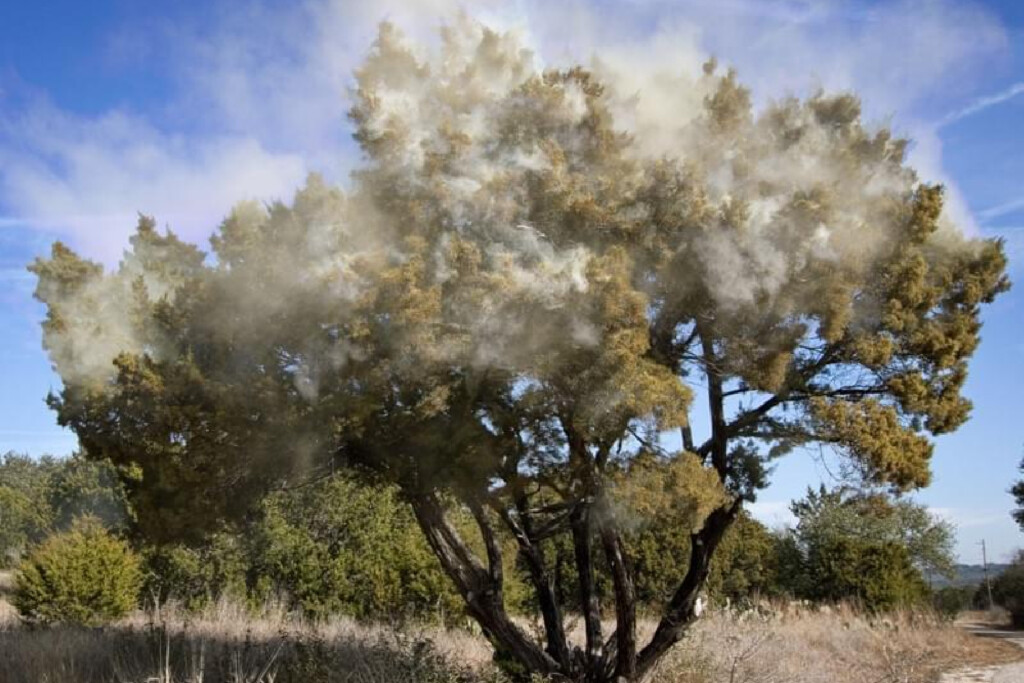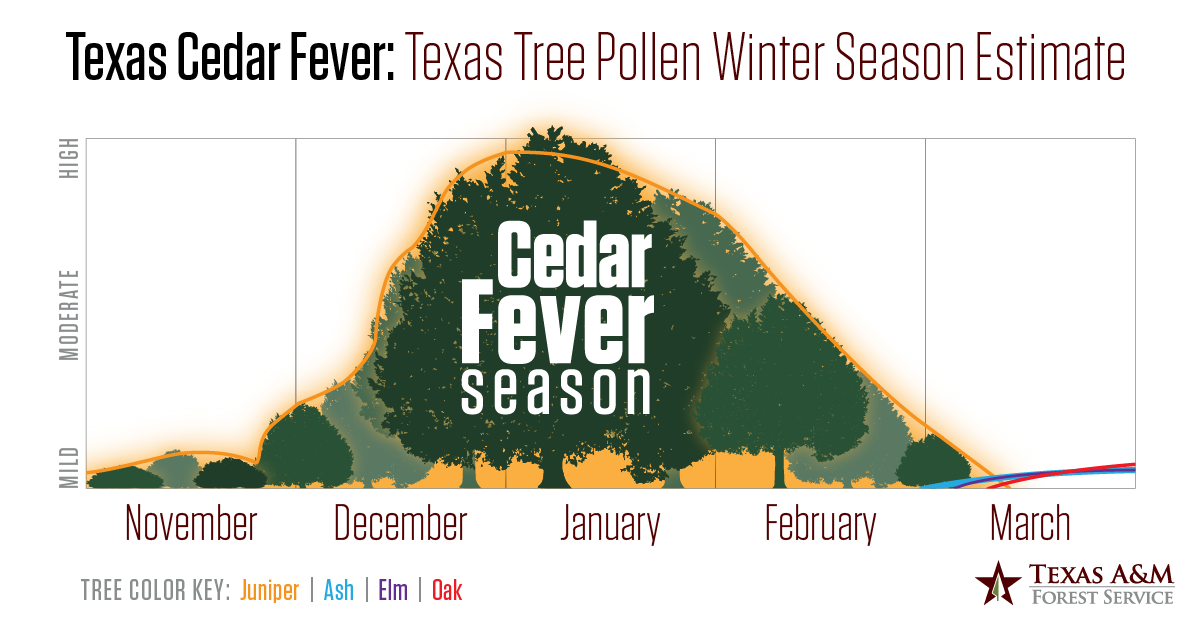Right smack in the middle of cold and flu season, and with COVID-19 still percolating, there’s something else in the air that might be making you miserable: Cedar fever.
According to experts with the Texas A&M Forest Service, Texas is at peak season for the time when Ashe juniper trees (often identified as mountain cedar) begin to produce pollen, which spews into the air pretty much from mid-December through February, tapering out around March.
“Cedar fever is the worst west of I-35, where you have primarily juniper mixed in with oaks and some other species,” said Jonathan Motsinger, Texas A&M Forest Service Central Texas operations head, in an explainer last year. “And because all of those junipers are producing pollen at the same time, you’re going to get a higher concentration of pollen in the air.”
Experts with A&M’s forestry service said that it’s not that pollen from Ashe junipers is super allergenic, it’s that there are so many of them across the state that the pollen becomes concentrated enough to fell even people who aren’t especially susceptible to allergies.
“There are millions of junipers out there all releasing pollen at the same time,” said woodland ecologist Karl Flocke, “you can’t help but breathe it in, and when you do, your body reacts as it would to any perceived threat – it tries to fight it.”

The symptoms of an allergic reaction to Ashe juniper pollen often mimic a cold, flu, or even some COVID symptoms, too. You can experience fatigue, a sore throat, runny nose, partial loss of smell, congestion, itchy eyes, sneezing, and even a very slight fever.
So with symptoms that could be anything, how do you know if it’s trees procreating or a virus? What can you do to feel slightly less miserable right now? We asked Dr. John Lazenby, chief medical officer at Medical City Children’s Hospital, those questions and more.
How do you know you’re dealing with “cedar fever” versus the flu or COVID? Cedar fever is a common patient complaint in North Texas. Symptoms include itchy or watery eyes, sneezing, congestion, or runny nose. These symptoms often arise when pollen increases. Symptoms of flu or COVID-19 include body aches, chills, fever, nausea or vomiting, diarrhea, and new loss of taste or smell – which is unique to COVID-19. While patients may see similarities between the two, it is important to note that cedar allergies do not often cause body aches, nausea or an actual fever. Because the symptoms can be confusing, you may consider getting tested for COVID-19 and the flu. Keep in mind it is possible to have COVID-19 and allergies simultaneously.
What are good ways to keep allergy symptoms at bay? It’s helpful to start taking antihistamines before seasonal allergies hit. While some allergies may seem unavoidable, there are easy steps to help keep allergy symptoms at bay and reduce pollen exposure. Close your windows and doors and circulate filtered air conditioning in the home and your car. Limit your time outdoors when pollen counts are high. Shower at night, before getting into bed, and wash your clothing to remove pollen that you may have come in contact with outside. Be on the lookout for common allergy symptoms such as itchy or watery eyes, sneezing, congestion or runny nose. If symptoms persist or worsen, contact your physician to discuss the next steps, such as allergy remedies or professional allergy testing.”
A lot of people were masking during the last cedar season, and they aren’t as much now. Did masking help avoid exposure to pollen? While masks are responsible for a dramatic drop in reported flu cases worldwide, they can also help protect you from seasonal allergies by filtering out pollen. Before COVID-19, people with severe allergies wore masks on days with high pollen counts to block pollen particles and reduce symptoms.
Many feel that if it’s “just allergies,” you should just tough it out. When should you seek medical attention for allergy symptoms? In terms of allergies, it is important to seek medical attention when experiencing shortness of breath, difficulty breathing, or have pain in your sinus cavity – which could indicate a bacterial sinus infection.
Author







